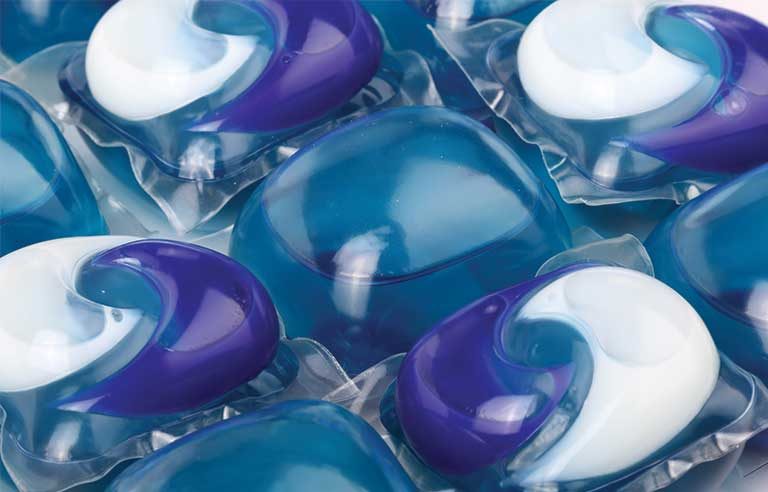‘We can do better’: Number of kids with access to laundry pods still high, researchers say

Columbus, OH — Public awareness campaigns and the first two years of a voluntary safety standard have resulted in only a “modest” decrease in the number of young children exposed to liquid laundry detergent packets, a recent study concludes.
Researchers from the Center for Injury Research and Policy, part of the Abigail Wexner Research Institute at Nationwide Children’s Hospital, and the Central Ohio Poison Center looked at 2012-2017 statistics from the National Poison Data System on exposures to the packets.
During that period, nearly 73,000 calls to poison control centers were made, with an average of one every 42 minutes in 2017. Almost 92% of the exposures involved children younger than 6, and 98.5% occurred at home.
Since the American Society for Testing and Materials published its voluntary Standard Safety Specification for Liquid Laundry Packets in 2015, the number of children 5 or younger exposed to the packets declined 18%. Hospital admissions stemming from exposures among this group, meanwhile, decreased 55.5% and “serious outcomes” declined 32.9%.
Still, Gary Smith, CIRP director and study senior author, said the current guidelines need improvement. The ASTM standard allows manufacturers to meet requirements in six different ways instead of conforming to the Poison Prevention Packaging Act of 1970, Nationwide Children’s Hospital states in a June 3 press release.
“The voluntary standard, public awareness campaigns, and product and packaging changes to date are good first steps,” Smith said in the release, “but the numbers are still unacceptably high. We can do better. Requiring that all liquid laundry detergent packet packaging be PPPA-compliant would be an important next step in reducing child access to these products.
“In addition, each laundry packet should be individually wrapped with child-resistant packaging, which would provide important layers of protection for this highly toxic product.”
CIRP is calling for further research to find out how to make the packets less toxic, and recommends health care providers continue to highlight the hazards and stress the importance of safe storage practices. The organization recommends that caregivers of young children or adults with dementia, Alzheimer’s disease or developmental disabilities use traditional laundry detergent, which is less toxic.
The study was published online June 3 in the journal Pediatrics.
Post a comment to this article
Safety+Health welcomes comments that promote respectful dialogue. Please stay on topic. Comments that contain personal attacks, profanity or abusive language – or those aggressively promoting products or services – will be removed. We reserve the right to determine which comments violate our comment policy. (Anonymous comments are welcome; merely skip the “name” field in the comment box. An email address is required but will not be included with your comment.)
